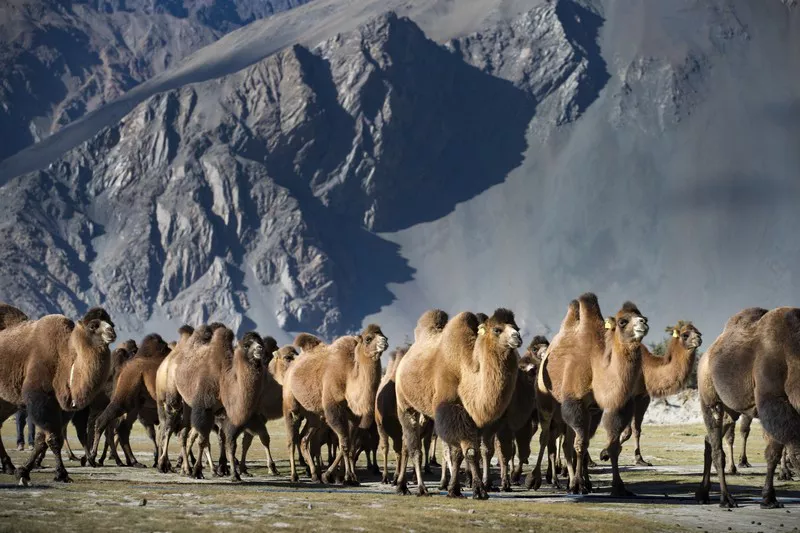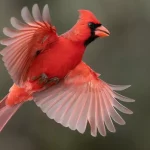Camels, often dubbed the “ships of the desert,” hold significant symbolic meaning across various cultures and contexts. Known for their resilience, adaptability, and historical importance, camels carry rich symbolism that reflects both their practical roles and their deeper meanings. This article explores the multifaceted symbolism of camels, including their spiritual meanings, cultural significance, color associations, interpretations in dreams, and the myths and legends surrounding them.
Camel Spiritual Meaning
In spiritual contexts, camels are frequently associated with endurance, patience, and resourcefulness. Their ability to thrive in harsh desert environments gives them profound symbolic significance.
Endurance and Resilience
Camels are renowned for their endurance and resilience, qualities that are often highlighted in spiritual symbolism. They symbolize the ability to persevere through challenging conditions and to remain steadfast in the face of adversity. In spiritual terms, camels represent the strength needed to overcome life’s obstacles and the resilience required to navigate difficult times.
Patience and Adaptability
Camels also symbolize patience and adaptability. Their slow and deliberate movements in the desert reflect a sense of calm and measured progress. Spiritually, camels teach the value of patience and the importance of adapting to one’s circumstances. They are seen as guides for those seeking to develop inner strength and flexibility in their personal and spiritual journeys.
Resourcefulness and Self-Sufficiency
Camels are capable of surviving in arid environments with minimal resources, symbolizing resourcefulness and self-sufficiency. Spiritually, they represent the ability to make the most of what one has and to thrive despite limited resources. Camels are seen as symbols of ingenuity and the capacity to find solutions in challenging situations.
Camel Symbolism (In Different Countries)
The symbolism of camels varies across cultures and countries, reflecting diverse historical, cultural, and social contexts.
Middle Eastern Countries
In Middle Eastern cultures, camels hold a place of great significance due to their historical and practical roles. They are seen as symbols of wealth, prosperity, and survival. Camels have been integral to trade and transportation in desert regions, symbolizing the ability to endure and thrive in harsh environments. They are also associated with hospitality and generosity, reflecting their role in traditional desert communities.
North African Countries
In North Africa, camels are similarly valued for their contributions to transportation and trade. They symbolize endurance, strength, and resilience. Camels are often featured in cultural celebrations and festivals, reflecting their importance in daily life and their role in supporting agricultural and economic activities. They are also seen as symbols of dignity and grace, reflecting their majestic presence in the desert.
Asia
In some Asian cultures, particularly in Central Asia, camels are associated with prosperity and success. They are symbols of endurance and resilience, reflecting their role in facilitating trade along the Silk Road. In these cultures, camels are often seen as symbols of wealth and status, representing the ability to overcome challenges and achieve success through perseverance.
Australia
In Australia, where camels are not native but have been introduced, they symbolize adaptability and resilience. The presence of camels in the Australian outback reflects their ability to adapt to new environments and thrive in challenging conditions. They are seen as symbols of strength and endurance in the context of Australian exploration and settlement.
See Also: 35 Camel Quotes, Sayings, and Proverbs
Camel Symbolism (With Different Colors)
The color of a camel can add layers of meaning to its symbolism, influencing how it is perceived in different contexts.
Brown Camels
Brown camels are the most common and are often associated with stability, reliability, and groundedness. The earthy brown color reflects their connection to the desert and their role as dependable companions in harsh environments. Brown camels symbolize practical wisdom and the ability to provide support and stability.
White Camels
White camels are less common but hold special symbolic significance. They are often associated with purity, spirituality, and grace. In some cultures, white camels are considered auspicious and are seen as symbols of blessings and divine favor. Their rare and pristine appearance makes them symbols of purity and high status.
Black Camels
Black camels are relatively rare and are often associated with mystery, power, and elegance. The black color signifies a sense of strength and authority, as well as the ability to command respect. Black camels symbolize resilience and the capacity to overcome challenges with dignity and grace.
Spotted Camels
Spotted camels, though uncommon, can symbolize uniqueness and diversity. The distinct patterns on their coats represent individuality and the ability to stand out. Spotted camels are seen as symbols of adaptability and the ability to embrace one’s uniqueness in the face of adversity.
Camel Symbolize in Dreams
Camels in dreams can carry various meanings depending on the context and the emotions experienced during the dream.
Dreams of Traveling with Camels
Dreams involving traveling with camels may symbolize a journey or transition in one’s life. The camel’s role as a reliable companion in travel reflects a sense of stability and support during significant changes or challenges. Such dreams can indicate the need for patience and endurance as one navigates through life’s transitions.
Dreams of Overcoming Obstacles with Camels
Dreaming of overcoming obstacles with camels can represent personal resilience and the ability to face difficulties head-on. The camel’s strength and endurance in the dream may reflect one’s own capacity to overcome challenges and achieve goals through perseverance and determination.
Dreams of Lost or Abandoned Camels
Dreams featuring lost or abandoned camels may symbolize feelings of insecurity or a sense of being unsupported. The absence of the camel in the dream can reflect concerns about stability and resources. It may be a message to address feelings of vulnerability or to seek support and guidance in one’s waking life.
Dreams of Healthy and Happy Camels
Dreams of healthy and happy camels often symbolize a sense of contentment and well-being. The positive portrayal of the camel in the dream can reflect feelings of satisfaction and balance in one’s life. It may be a sign of reassurance and encouragement to continue pursuing one’s goals with confidence and resilience.
The Myths and Legends About Camels
Camels have been featured in various myths and legends across different cultures, highlighting their symbolic significance and historical importance.
Ancient Egyptian Mythology
In Ancient Egyptian mythology, camels were not native but were still associated with the concept of endurance and survival in harsh environments. They were symbolically linked to the gods of the desert and were seen as creatures capable of bridging the gap between the divine and mortal realms. Their resilience and ability to traverse the desert were celebrated in mythological stories and symbols.
Arabian Legends
In Arabian legends, camels are often depicted as noble and valuable creatures. They are associated with the desert’s harsh beauty and are celebrated for their role in facilitating trade and travel. The camel’s role in these legends highlights its importance as a symbol of prosperity and survival in the arid environment of the Arabian Peninsula.
Biblical References
In the Bible, camels are mentioned several times and are often associated with wealth and prosperity. They are depicted as valuable assets and symbols of status in biblical times. The camel’s role in the biblical narrative reflects its importance as a means of transportation and trade, symbolizing the abundance and blessings associated with successful journeys and endeavors.
Central Asian Folklore
In Central Asian folklore, camels are often portrayed as wise and resourceful animals. They are featured in stories that highlight their endurance and adaptability, reflecting their significance in supporting trade and travel along the Silk Road. The camel’s role in these folktales underscores its importance as a symbol of strength and resilience.
Conclusion
Camels hold a profound and diverse range of symbolic meanings across various cultures and contexts. From their spiritual significance of endurance and adaptability to their cultural roles in different countries, colors, and dreams, camels represent a unique blend of strength, resilience, and resourcefulness. Their presence in myths and legends further emphasizes their importance as symbols of survival, prosperity, and grace. Whether seen as practical companions in the desert or as powerful symbols in cultural narratives, camels continue to captivate and inspire with their rich and multifaceted symbolism.
Related topics:













